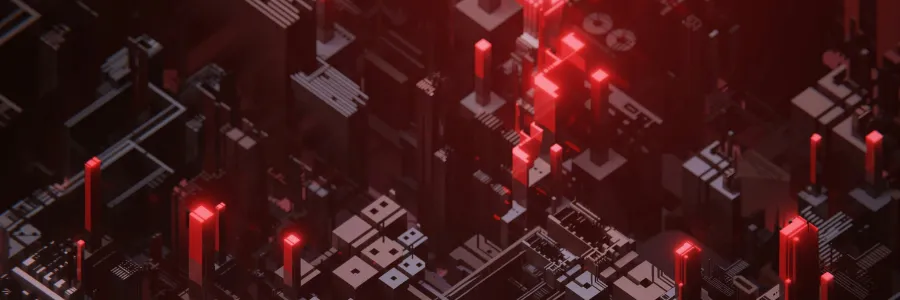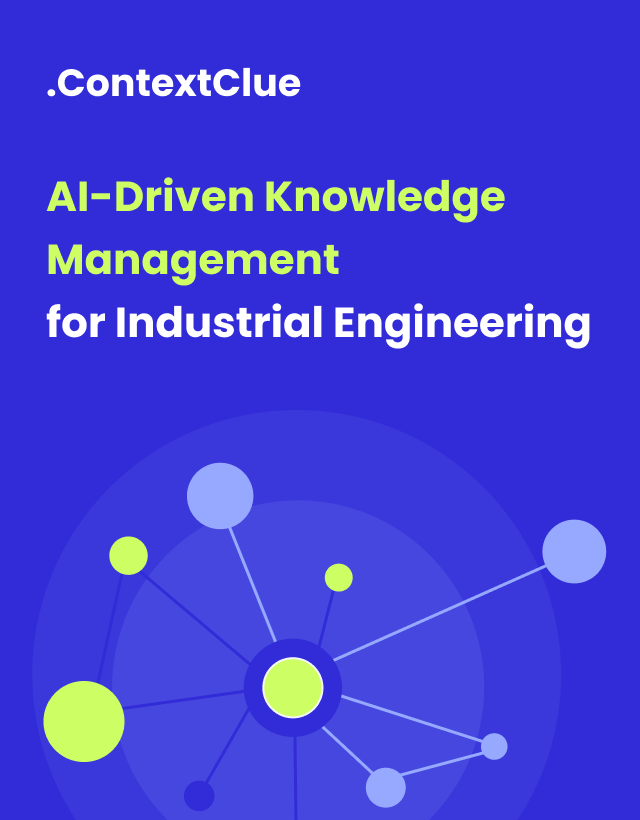
September 29, 2025
AI in Manufacturing: How DINOv3 Transforms Quality Control
Author:

CSO & Co-Founder
Reading time:
9 minutes
Inspection in manufacturing is costly and time-consuming. In high-volume production, even skilled human operators miss defects, and the pressure for faster output with fewer errors has made automated quality control a top priority.
Traditional rule-based vision systems can help, but they often struggle with subtle or inconsistent defects, and they typically require large, labeled datasets that most factories simply don’t have.
This leaves a gap: how to build inspection systems that learn flexibly, scale with production, and don’t depend on exhaustive labeling?

Enter Meta’s newest SSL computer vision model – DINOv3.

What Is DINOv3? New Face of Self-Supervised Computer Vision
DINOv3 is a self-supervised learning (SSL) vision model developed by Meta AI in 2023. It is the third version in the DINO family (DIstillation with NO labels), a framework created to learn image representations without relying on labeled datasets.
Traditional vision models need massive amounts of human-annotated data, which is expensive and time-consuming to create. In contrast, DINOv3 learns directly from raw, unlabeled images, making it more practical for real-world applications.
Trained at a massive scale with billions of parameters and over a billion images, DINOv3 works by comparing multiple augmented views of the same image and aligning them into consistent, meaningful representations.
This gives the model a much deeper understanding of images than earlier versions… and stronger capabilities than most other tools available today.
Thanks to improvements in stability, scalability, and masked image modeling, it reaches top-level accuracy without the heavy costs of labeling data. DINOv3 can handle everything from spotting tiny defects to more complex tasks like object detection or segmentation.
That makes it not just more powerful, but also a more practical choice than traditional supervised or rule-based systems.
Key Advantages of DINOv3
- Handles unlabeled industrial data – perfect for industries where labeling images is costly or impractical.
- Learns high-level features – moves beyond pixel recognition to capture shapes, textures, and semantic meaning.
- Outperforms supervised models – in many classification and detection benchmarks.
- Adapts quickly – requires only minimal labeled examples to adjust to new products, materials, or defect types.
- Versatile backbone – can power detection, segmentation, clustering, and multimodal AI systems.
Open-Source and Commercial Licensing
Meta released DINOv3 as open source with commercial-friendly licensing. This means researchers and manufacturers can experiment, customize, and deploy the model without prohibitive licensing fees, making it one of the most accessible AI vision backbones available today.
Applications of DINOv3 in Automated Quality Control
So, how does all of this theory translate to factory floors? Here’s where DINOv3 makes the difference.
Image Classification and Defect Detection
Instead of needing thousands of labeled samples, DINOv3 can be fine-tuned with just a few. It classifies products or defect types and, combined with tools like Mask R-CNN or DETR, pinpoints exactly where defects appear on the line.
Pattern Discovery
By comparing image embeddings, DINOv3 can group similar defects and reveal hidden issues in large, unlabeled datasets.
Multi-Modal Manufacturing Insights
When paired with language models, DINOv3 doesn’t just detect defects. It helps explain them. Automated reports, compliance checks, and easy-to-read documentation make inspection results more actionable.
Assembly Line Consistency
The model keeps watch over production stages, flagging problems as soon as they appear. If needed, it can even work with robotic systems to pause a defective line.
Predictive Equipment Maintenance
Beyond product inspection, DINOv3 analyzes visual cues of wear, discoloration, or vibration in machinery. By catching early signs of possible malfunctions, it supports proactive machine maintenance, extends equipment life, and keeps production on track.
These applications are powerful in principle, but they matter most when seen in real-world settings.
DINOv3 in Action: Industry Use Case Examples
Here are three industry examples where DINOv3 already shows promise:
Automotive Industry: Catching surface defects before they become costly problems
In car manufacturing, surface inspection is notoriously tricky. Scratches, dents, or paint irregularities can be almost invisible to the human eye—but they still impact quality. With DINOv3, manufacturers can detect these defects earlier and more consistently.
Why it matters:
- Catching defects early means fewer expensive rework cycles
- Reliable quality checks build trust in the brand
- Automated inspections reduce dependence on tired human eyes
Electronics: Improved PCB inspection with fewer false positives
When it comes to printed circuit boards (PCBs), even the smallest flaw can cause a major failure. The problem is that traditional inspection methods tend to be overly cautious, flagging so many false positives that production slows down. But thanks to its ability to learn nuanced visual patterns, DINOv3 can easily spot the difference between real defects and minor, non-critical variations.
Why it matters:
- Fewer false alarms mean less wasted time and material
- Precise defect detection improves accuracy and consistency
- Higher throughput keeps production moving smoothly
Food Processing: Reliable contamination detection and compliance assurance
In food production, mistakes don’t just hurt a brand’s reputation; they can put people’s health at risk. That’s why DINOv3’s ability to detect anomalies in packaging, spot unexpected particles, or identify early signs of spoilage is such a game-changer. It can adapt across different product lines without constant retraining, making it both flexible and reliable.
Why it matters:
- Safer products that meet strict food safety standards
- Continuous monitoring keeps quality consistent at scale
- Lower risk of recalls protects both consumers and brands
Of course, knowing what DINOv3 can do is one thing. Figuring out how to put it into practice is another.
Implementation Blueprint: How to Deploy DINOv3
Rolling out DINOv3 for automated quality control doesn’t have to be overwhelming. By approaching it in three stages—infrastructure, modeling, and production—manufacturers can move from pilot projects to full-scale deployment with minimal disruption.
1. Infrastructure Setup
The foundation of a successful DINOv3 deployment begins with the right infrastructure:
- Edge vs. Cloud DeploymentUse edge computing for low-latency, on-site inspection or cloud deployment for scalability and centralized model management. Many manufacturers combine both in a hybrid approach.
- Camera System IntegrationPosition high-resolution industrial cameras at critical points on the production line to capture real-time visual data.
- MES/ERP ConnectivityConnect DINOv3 outputs directly with Manufacturing Execution Systems (MES) and Enterprise Resource Planning (ERP) systems, ensuring inspection results flow seamlessly into existing workflows to automate decision-making.
2. Modeling and Training
One of DINOv3’s biggest strengths is its low dependence on labeled data, which simplifies adoption.
- Fine-tune the pretrained backbone with a small set of defective and non-defective samples.
- Regularly retrain the model with fresh production images to maintain accuracy as conditions change.
- Quickly adapt to new product lines without starting from scratch, reducing time-to-deployment for quality control.
3. Production Deployment
Once live, DINOv3 becomes a real-time quality control partner:
- Inspects products on the line in real time, detecting micro-defects before they move downstream.
- Flags or rejects defective items automatically, reducing human intervention.
- Integrates with conveyors, robotic arms, and sorting machines to separate defective products without slowing production.
In practice, this blueprint allows manufacturers to start small with pilot projects and then scale DINOv3 across multiple lines or plants, creating a connected, adaptive quality control ecosystem.
ROI at Scale: Why DINOv3 Pays Off
Deploying DINOv3 for automated quality control delivers real, measurable returns. By cutting costs, improving defect detection, and speeding up production cycles, it helps manufacturers turn quality control into a profit driver.
1. Lower Inspection Labor Costs
Automating visual inspection with DINOv3 reduces the need for large inspection teams. This not only cuts labor expenses but also frees up skilled workers for higher-value tasks.
2. Higher Accuracy and Better Quality Metrics
Systems like DINOv3 detect anomalies with greater sensitivity and precision than conventional machine vision. The payoff is fewer defects, more reliable products, and stronger customer satisfaction.
3. Savings on Data Preparation
By reducing dependency on labeled datasets, companies can save thousands of hours and dollars in data preparation.
4. Less Waste and Lower Rework Costs
By catching micro-defects early in the production line, DINOv3 helps manufacturers minimize material waste and avoid the costs of rework.
5. Faster Product Launch Cycles
Unlike older vision systems that need full retraining for every new product line, DINOv3 adapts quickly with minimal human input. This flexibility makes it ideal for global manufacturers managing diverse product ranges, accelerating time-to-market for new launches.
At a glance: DINOv3 vs. Other AI Models for Quality Control
DINOv3 vs. Supervised Models
Supervised models need large labeled datasets, which are expensive and time-intensive. DINOv3, by contrast, thrives on unlabeled industrial data, making it more scalable.
DINOv3 vs. Traditional Vision Systems
Traditional systems rely on rule-based programming that lacks flexibility. DINOv3 adapts dynamically, learning from variations and anomalies without requiring new rule sets.
FAQ section
What is DINOv3 in simple terms?
DINOv3 is an AI system that can learn to spot patterns and defects in images without needing humans to label the data first.
How does DINOv3 improve quality control?
It identifies subtle defects, adapts to new products, and reduces inspection costs, making quality control faster and more accurate.
How does DINOv3 integrate with existing manufacturing systems?
It can be integrated with MES (Manufacturing Execution Systems), ERP systems, industrial camera infrastructure, and can run on either edge devices (for real-time use) or cloud platforms (for large-scale analysis).
Can small manufacturers adopt DINOv3?
Absolutely. With open-source tools and cloud infrastructure, even small manufacturers can integrate DINOv3 without massive upfront investment.
Does DINOv3 require human supervision?
While it automates most tasks, with any AI-based technology human oversight is still important for high-stakes decisions and edge cases.
What industries benefit the most from SSL computer vision solutions?
Automotive, electronics, food, and semiconductors are leading adopters, but the model is adaptable across industries.
What hardware is required for deployment?
Manufacturers can deploy DINOv3 on edge GPUs for real-time use cases or cloud infrastructure for large-scale analysis.
How fast can DINOv3 adapt to new products?
With few-shot learning, it adapts quickly, requiring only a handful of labeled images.
Is DINOv3 cost-effective in regulated industries?
Yes. It reduces inspection costs, ensures compliance, and avoids expensive recalls, making it highly valuable in regulated industries like food, pharma or aerospace.
Category:






